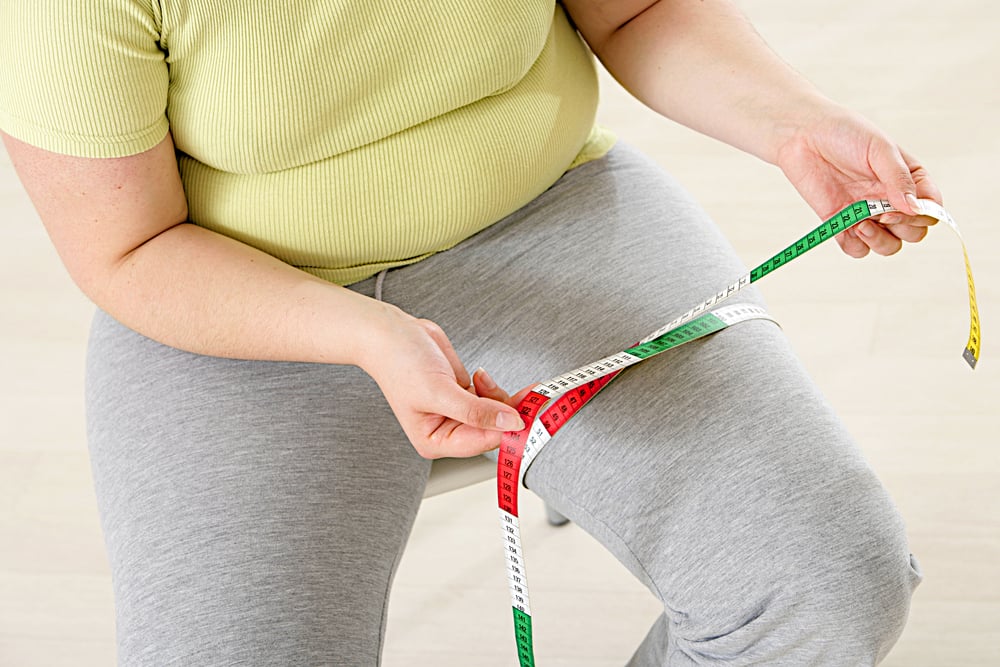Is It True Losing Belly Fat Is More Difficult than Thigh Fat?

Losing fat cannot be instant, it needs a struggle. In general, there are two types of fat that you often encounter: fat that sticks out in the abdomen (visceral) and fat that is under the arms or thighs (subcutaneous). So, which belly fat and thigh fat are the most difficult to lose? Check out the explanation below.
What’s the difference between belly fat and thigh fat?
Fat in the belly is identical to visceral fat. Visceral fat is fat found in the abdominal cavity. This fat wraps around the internal organs in the body, such as the liver and spleen. It is actually difficult to see how much belly fat there is in a person’s body with the naked eye. However, a distended belly and a wide waist can be a sign that you have excess belly fat.
This kind of fat can interfere with the function of other internal organs in the body by releasing harmful substances.
Unlike subcutaneous fat, subcutaneous fat is stored right under your skin, especially in your thighs. You can easily pinch or pinch your thigh fat with your hands, in contrast to the belly fat that is inside.
Thigh fat aka subcutaneous in sufficient amount is actually needed to warm the body. Unfortunately, too much of it can be bad and be a sign of obesity or being overweight.
Is it true that belly fat is harder to lose?

Reporting from the Livestrong page, basically when you are reducing calories from food and exercising more often, you will lose belly fat first. The nature of visceral fat is metabolically active, this is what makes visceral fat able to respond to changes in diet.
Well, the greater the amount of visceral fat, the more difficult it is to burn fat. This is what usually happens to adults.
As mentioned earlier, visceral fat is a type of fat whose tissue is active. That means, this belly fat not only accumulates, but can release something into the body, namely hormones and compounds that trigger inflammation.
In fact, belly fat can stimulate hormone production in the body. The main hormone stimulated by this fat is the hormone cortisol. The higher the level of the hormone cortisol, it will trigger the body to store visceral fat more easily, plus this hormone also stimulates hunger.
Well, this excessive level of the hormone cortisol in the body is what makes many people with distended stomachs become discouraged, because it is difficult to get rid of. Plus, if the person is under stress. More and more cortisol will be produced.
Once this visceral fat is present, cortisol production will always appear. The more visceral fat, the more difficult it will be to remove because the more cortisol will be in the body.
So that’s an explanation of why belly fat is ultimately more difficult to treat than the problem of thigh fat. However, whatever your condition, it certainly doesn’t hurt to see a doctor, exercise regularly, and live a healthy life overall.
How to get rid of belly fat?
Adjust your diet to be low in carbohydrates. A low-carb diet is an effective way to lose belly fat. In fact, several studies have shown that low-carbohydrate diets are more effective at losing belly fat than low-fat diets.
In addition, exercise is also very important to lose belly fat or thigh fat. Ideally, do heart pulmonary exercise that can increase your heart rate and strength training that can increase muscle strength.
Examples of cardio exercises that you can do include running, cycling, aerobics, and swimming. Examples of strength training that can be done include squats, push ups, and lifting weights.
Last but not least, you must also manage stress. Stress makes it easier for the body to store excess visceral fat. Relaxation techniques such as deep breathing and stress management techniques can be used to reduce stress.
Hello Health Group does not provide medical advice, diagnosis or treatment.